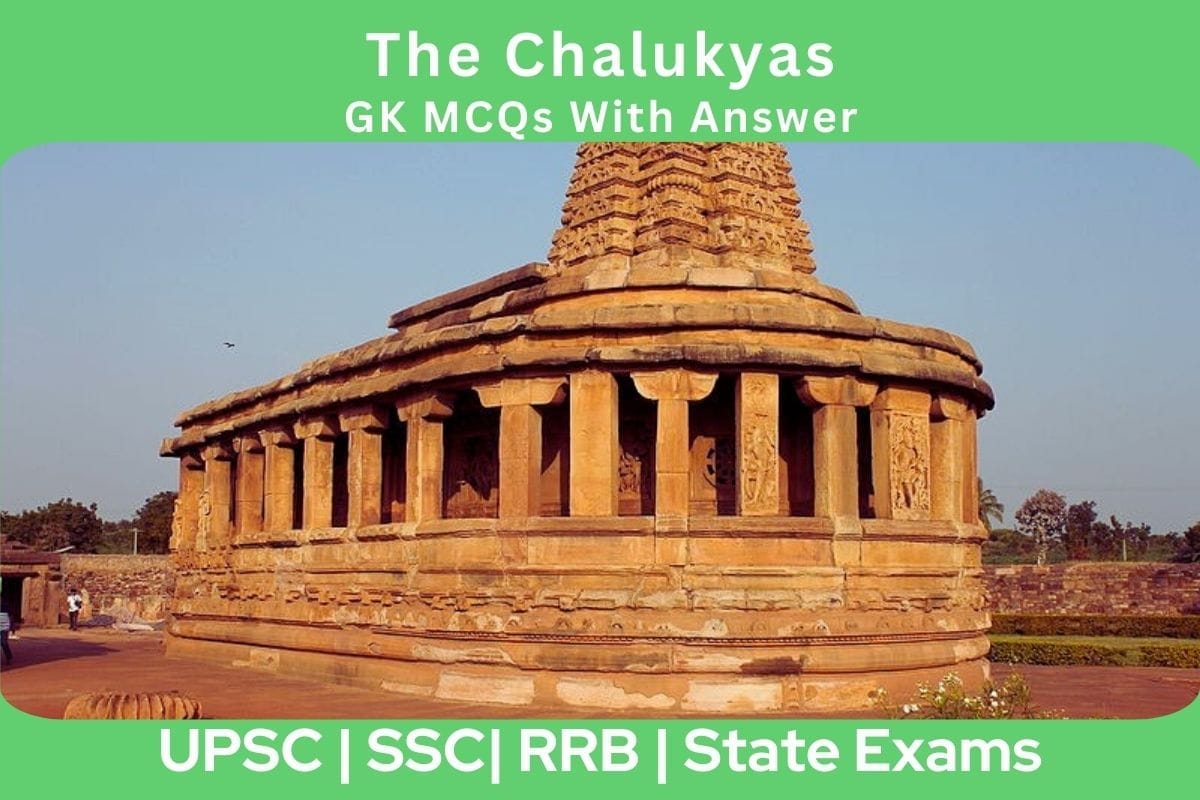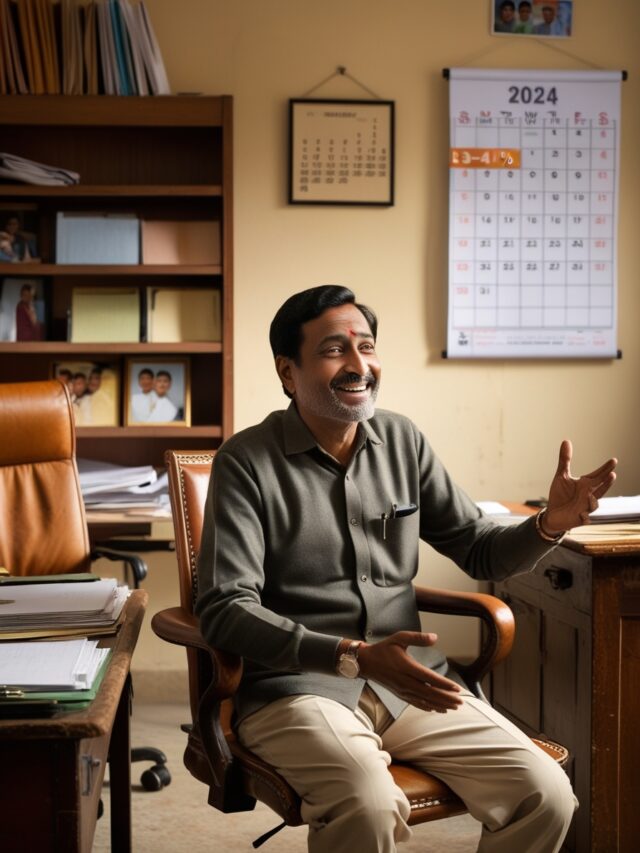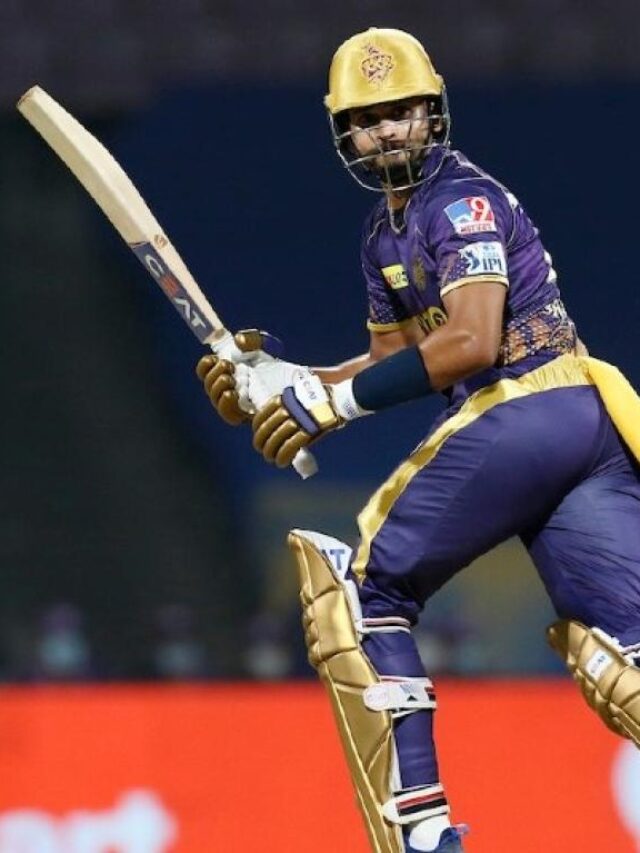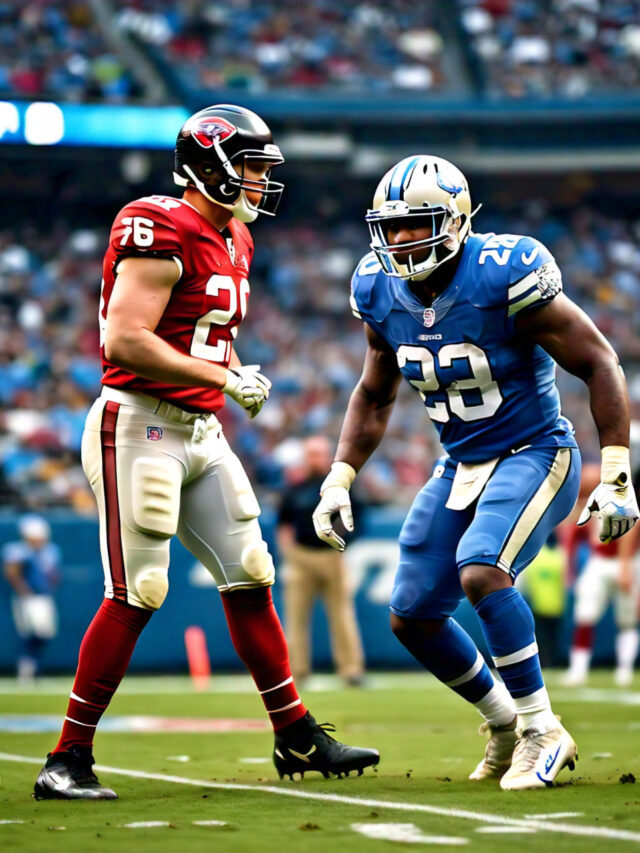
Q1: Where was the capital of Chalukyas situated in the western Deccan?
1. Ujjain
2. Vatapi
3. Madurai
4. Vellore
Show Answer
Answer: 2
Explanation: The Chalukyas of Badami, also known as the Western Chalukyas, established their capital at Vatapi, which is modern-day Badami in Karnataka. They were a significant dynasty in South India, ruling the western Deccan region for approximately two centuries from the 6th century CE. The Chalukyas had two other branches, the Eastern Chalukyas of Vengi and the Chalukyas of Lata, who ruled independently in their respective regions.
Q2: Which of the following are the branches of the Western Chalukyas?
1. Eastern Chalukyas of Vengi
2. Chalukyas of Lata
Select the correct option from the codes given below:
1. Only 1
2. Only 2
3. Both 1 & 2
4. Neither 1 & 2
Show Answer
Answer: 3
Explanation: The early Western Chalukyas ruled for about two centuries but were eventually displaced by the rising Rashtrakutas during the middle of the 8th century. The Rashtrakutas became a powerful dynasty and took control of the Deccan region.
Q3: The Early Western Chalukyas who ruled for about two centuries but were ousted by which of the following during the middle of the 8th century?
1. Rashtrakutas
2. Palas
3. Gujara-pratiharas
4. None of the above
Show Answer
Answer: 1
Explanation: The Early Western Chalukyas ruled for about two centuries but were eventually ousted by the Rashtrakutas during the middle of the 8th century. The Rashtrakutas emerged as a powerful dynasty and took control of the region.
Q4: In northern Maharashtra and Vidarbha, the Vakatakas were followed by which of the following?
1. Chalukyas of Badami
2. Rashtrakutas
3. Eastern Chalukyas
4. None of the above
Show Answer
Answer: 1
Explanation: In northern Maharashtra and Vidarbha, the Vakatakas were succeeded by the Chalukyas of Badami. The Chalukyas of Badami played a significant role in the history of Deccan and South India for about two hundred years from the 6th century CE.
Q5: Which of the following laid the foundations of the fort of Vatapi?
1. Jayasimha
2. Ranaraga
3. Pulkeshin I
4. Mangalesh
Show Answer
Answer: 3
Explanation: Pulkeshin I, one of the notable rulers of the Chalukyan dynasty, is credited with laying the foundations of the fort of Vatapi (modern-day Badami) in the Bijapur District. However, he is not specifically credited with any major conquests during his rule. Pulkeshin I, who ruled from around 540 to 566 CE, was known for performing various shrauta sacrifices, including the ashvamedha sacrifice.
Q6: Pulkeshin I ruled during which of the following periods?
1. 515-536 CE
2. 517-546 CE
3. 530-556 CE
4. 540-566 CE
Show Answer
Answer: 4
Explanation: Pulkeshin I ruled from around 540 to 566 CE. He founded the Chalukya kingdom with its capital at Vatapi (Badami). Pulkeshin I was known for performing various shrauta sacrifices, including the ashvamedha sacrifice.
Q7: Which of the following was the son of Pulkeshin I?
1. Pulkeshin I
2. Mangalesha
3. Jayasimha
4. None of the above
Show Answer
Answer: 2
Explanation: Following Pulkeshin I, his son Mangalesha continued the dynasty’s rule from around 566 to 598 CE, with Badami as the capital. Mangalesha’s younger brother, Kirtivarman I, played a significant role in the construction and beautification of the town and is known as the first maker of Vatapi.
Q8: Kirtivarman I ruled in which of the following periods?
1. 546-558 CE
2. 550-562 CE
3. 555-588 CE
4. 566-598 CE
Show Answer
Answer: 4
Explanation: In northern Maharashtra and Vidarbha, the Vakatakas were succeeded by the Chalukyas of Badami. The Chalukyas of Badami played a significant role in the history of Deccan and South India for about two hundred years from the 6th century CE.
Q9: In a war of succession, Pulkeshin II emerged triumphant against which of the following?
1. Pulkeshin I
2. Kirtivarman I
3. Mangalesha
4. Vikramaditya I
Show Answer
Answer: 3
Explanation: After the death of Kirtivarman I, a war of succession broke out between his brother Mangalesha and his nephew Pulkeshin II. Pulkeshin II emerged triumphant and succeeded Mangalesha. Pulkeshin II, also known as Vallabha, ruled from around 610 to 642 CE, achieving numerous military successes and becoming a renowned ruler in the dynasty’s history. He was the contemporary of Harsha Vardhana and successfully defeated him on the banks of the river Narmada. Pulkeshin II also allied with regional powers and defeated Harsha in 637-638 AD.
Q10: Which of the following Chalukyan kings succeeded Mangalesha?
1. Pulkeshin I
2. Pulkeshin II
3. Vikramaditya I
4. Vinayaditya I
Show Answer
Answer: 2
Explanation: The Chalukyan King Vikramaditya I succeeded Pulakesin II and pushed the Pallavas out of Badami. He reestablished Chalukya authority over the entire kingdom and achieved victories over successive Pallava rulers, including capturing their capital, Kanchi.
Q11: Pulkeshin II’s rule is associated with which of the following periods?
1. 605-622 CE
2. 606-630 CE
3. 609-635 CE
4. 610-642 CE
Show Answer
Answer: 4
Explanation: Pulkeshin II, also known by several titles including Vallabha, Prithivi-Vallabh, Sri Prithivi-Vallabh, Paramesvara, and Parama-bhagavata, was a prominent Chalukya king who ruled from around 610 to 642 CE. He is regarded as one of the greatest kings of the Chalukyan dynasty.
Q12: Which of the following is described as the Night of destruction?
1. Jayasimha
2. Ranaraga
3. Pulkeshin I
4. Kirtivarman I
Show Answer
Answer: 4
Explanation: Kirtivarman I, during his reign, earned the title Night of destruction for his military campaigns that were particularly devastating to the Nalas, Mauryas, and Kadambas. He is also credited with breaking up a confederacy of the Kadamba kings.
Q13: Ravikirti was the court poet of which of the following Chalukyan Kings?
1. Pulkeshin I
2. Kirtivarman I
3. Pulkeshin II
4. Vikramaditya I
Show Answer
Answer: 3
Explanation: Ravikirti served as the court poet of Pulkeshin II and composed an eulogy of the king in the Aihole Inscription. This inscription describes Pulkeshin II’s victorious campaigns against the Kadambas of Banavasi, Alupas, and Gangas of Mysore.
Q14: Which of the following is the contemporary of Harsha Vardhana and defeated him on the banks of the river Narmada?
1. Pulkeshin II
2. Vikramaditya I
3. Vikramaditya II
4. None of the above
Show Answer
Answer: 1
Explanation: Pulkeshin II, a contemporary of Harsha Vardhana, successfully defeated Harsha on the banks of the Narmada River in 637-638 AD. He allied with regional powers and managed to overcome Harsha’s forces.
Q15: Vikramaditya I ruled during which of the following periods?
1. 625-650 CE
2. 640-670 CE
3. 650-675 CE
4. 655-680 CE
Show Answer
Answer: 4
Explanation: Vikramaditya I ruled from around 655 to 680 CE. There was a period of vacancy on the Chalukya throne from 642 to 655 AD, and Vikramaditya I emerged as one of the claimants and eventually became the ruler.
Q16: Rajamalla title was adopted by which of the following Chalukyan Kings?
1. Pulkeshin II
2. Vikramaditya I
3. Vinayaditya I
4. Vikramaditya II
Show Answer
Answer: 2
Explanation: Vikramaditya I, who ruled from around 655 to 680 CE, adopted the title of Rajamalla, which means the Sovereign of the Mallas or Pallavas. He achieved victories over the Cheras, Cholas, and Pandyas.
Q17: Vinayaditya was succeeded by which of the following Chalukyan king?
1. Vikramaditya I
2. Vijayaditya
3. Vikramaditya II
4. None of the above
Show Answer
Answer: 2
Explanation: Vijayaditya succeeded Vinayaditya and ruled from around 696 to 733 CE. He was renowned for his prolific temple-building activities and displayed tolerance towards Jainism during his rule.
Q18: Which of the following acquired the title of dakshinapatheshwara?
1. Kirtivarman I
2. Pulkeshin II
3. Vikramaditya I
4. Vikramaditya II
Show Answer
Answer: 2
Explanation: Pulkeshin II, known as the Lord of the South, was awarded the title of dakshinapatheshvara. He defeated Harsha and led expeditions against the eastern Deccan kingdoms, South Kosala, and Kalinga.
Q19: Which of the following adopted the epithet of Vatapikonda?
1. Vikramaditya I
2. Narsimhavarman
3. Pulkeshin
4. Kirtivarman I
Show Answer
Answer: 2
Explanation: During the second expedition led by Pulakesin II against the Pallavas, the Pallava king Narsimhavarman emerged victorious and adopted the epithet of Vatapikonda after killing Pulakesin II.
Q20: Which of the following succeeded Pulakesin II after pushing the Pallavas out of Badami?
1. Kirtivarman I
2. Vikramaditya I
3. Vikramaditya II
4. Vinayaditya I
Show Answer
Answer: 2
Explanation: The Chalukyan King Vikramaditya I succeeded Pulakesin II and pushed the Pallavas out of Badami. He reestablished Chalukya authority over the entire kingdom and achieved victories over successive Pallava rulers, including capturing their capital, Kanchi
Q21: Which of the following Chalukyan kings built the temple of Siva at Pattadakal in the Bijapur district?
1. Vikramaditya I
2. Vinayaditya I
3. Vikramaditya II
4. Vijayaditya
Show Answer
Answer: 4
Explanation: Chalukyan king Vijayaditya was known for his construction of the Siva temple at Pattadakal in the Bijapur district. Additionally, his sister also constructed a Jain temple at Lakshmeswar. Vijayaditya displayed tolerance towards Jainism and donated villages to Jain preachers.
Q22: Which of the following Chalukyan Kings set up a pillar of victory on the shores of the Southern Ocean?
1. Vikramaditya I
2. Vinayaditya I
3. Vijayaditya
4. Vikramaditya II
Show Answer
Answer: 4
Explanation: Vikramaditya II, another Chalukyan king, is credited with destroying various neighboring kingdoms, including the Cholas, Keralas, Pandyas, and Kalabhras. He commemorated his military successes by setting up a victory pillar on the shores of the Southern Ocean.
Q23: Arab intruders of the Umayyad Caliphate invaded southern Gujarat during the reign of which of the following Chalukyan king?
1. Pulkeshin II
2. Vikramaditya I
3. Vikramaditya II
4. Kirtivarman II
Show Answer
Answer: 3
Explanation: During Vikramaditya II’s reign, the Umayyad Caliphate’s Arab intruders invaded southern Gujarat. However, they were eventually defeated and expelled by Pulakesi, a Chalukya governor of Navsari.
Q24: Which of the following later Chalukyan kings killed Munja, the Paramara king of Malava?
1. Vikramaditya V
2. Jayasimha I
3. Tailapa II
4. None of the above
Show Answer
Answer: 3
Explanation: Tailapa II, a later Chalukyan king, expanded his realm by conquering Chedi, Orissa, Nepal, and Kuntala. He is believed to have killed Munja, the Paramara king of Malava. The later Western Chalukyas proudly referred to themselves as the Lords of Kuntala.
Q25: The Later Chalukyan King Somesvara I came to the throne in which of the following years?
1. 1022 A.D.
2. 1032 A.D.
3. 1042 A.D.
4. 1052 A.D.
Show Answer
Answer: 3
Explanation: Somesvara I took the throne in 1042 A.D. and shifted his capital from Manyakheta to Kalyanpura of Kalyana. He continued the struggle against the Chola empire, emphasizing the ongoing conflicts in the region.
Q26: Somesvara I established his capital at which of the following places?
1. Manyakheta
2. Kalyanpura
3. Badami
4. Kanchi
Show Answer
Answer: 2
Explanation: Somesvara I, a Later Chalukyan King, shifted his capital from Manyakheta to Kalyanpura of Kalyana. From this new capital, he continued his struggle against the Chola empire, signifying the strategic importance of his reign.
Q27: Somesvara II became king in which of the following years?
1. 1038 A.D.
2. 1048 A.D.
3. 1058 A.D.
4. 1068 A.D.
Show Answer
Answer: 4
Explanation: Somesvara II became king in 1068 A.D. but fell into disfavor and was forced to recognize his brother, Vikramaditya, as the Yuvaraja. However, Vikramaditya later decided to restore Somesvara II to the throne after being defeated by the Cholas. Yet, in 1076 A.D., Vikramaditya VI proclaimed himself as the king.
Q28: Vikramaditya VI came to power in which of the following years?
1. 1056 A.D.
2. 1066 A.D.
3. 1076 A.D.
4. 1086 A.D.
Show Answer
Answer: 3
Explanation: After being defeated by the Cholas, Vikramaditya decided to restore Somesvara II to the throne. However, he later decided to become the king himself as Vikramaditya VI in 1076 A.D.
Q29: Which of the following succeeded Vikramaditya VI?
1. Somesvara I
2. Somesvara II
3. Somesvara III
4. None of the above
Show Answer
Answer: 3
Explanation: Vikramaditya VI was succeeded by his son, Somesvara III, who focused more on literary matters than military affairs. During his rule, his vassal, Vishnuvardhana, declared his independence and conquered parts of the Western Chalukya territories.
Q30: The Later Chalukyan king Taila III ruled during which of the following periods?
1. A.D. 1141 to 1153
2. A.D. 1151 to 1163
3. A.D. 1161 to 1173
4. None of the above
Show Answer
Answer: 2
Explanation: Taila III ruled from A.D. 1151 to 1163 and was captured by Prataparudra II, the Kakatiya invader. Though he was later released, he faced domestic troubles that weakened his reign.
Q31: Which of the following was defeated by the Rashtrakuta king Dantidurga?
1. Kirtivarman I
2. Kirtivarman II
3. Vikramaditya I
4. Vikramaditya II
Show Answer
Answer: 2
Explanation: Kirtivarman II, the last ruler of the Chalukya dynasty, was defeated by the Rashtrakuta king Dantidurga, marking the end of the Chalukya dynasty. The Rashtrakutas emerged as a prominent power in the region.
Q32: Which of the following developed the Deccan or Vesara style of temple building?
1. Chalukyas
2. Rashtrakutas
3. Pallavas
4. Palas
Show Answer
Answer: 1
Explanation: The Chalukyas of Badami played a significant role in the development of the Deccan or Vesara style of temple architecture. Although this style reached its zenith under the Rashtrakutas and Hoysalas, the Chalukyas laid the foundation for this distinctive regional architectural style.
Q33: The later Western Chalukya dynasty came to an end in which of the following years?
1. 1190 A.D.
2. 1200 A.D.
3. 1210 A.D.
4. None of the above
Show Answer
Answer: 4
Explanation: The later Western Chalukya dynasty did not come to an end in the years mentioned. The Yadavas of Devagiri and the Hoysalas, under Vira Ballala I, attacked the later Western Chalukyas, but the dynasty continued to exist beyond the specified years.
Q34: The Eastern Chalukyas established themselves in which of the following areas?
1. Guntur
2. Warangal
3. Vengi
4. Chittor
Show Answer
Answer: 3
Explanation: The Eastern Chalukyas established themselves in the region of Vengi in Andhra Pradesh in the second half of the 8th century, strategically situated and a source of conflicts with the Cholas and Western Chalukyas.
Q35: Jayasimha I was succeeded by which of the following in the Eastern Chalukyan territory?
1. Vijayaditya I
2. Jayasimha II
3. Indravarman
4. None of the above
Show Answer
Answer: 3
Explanation: Jayasimha I was succeeded by his brother Maharaja Indravarman in the Eastern Chalukyan region around 663 A.D., and Indravarman held various titles like Indra-raja, Induraja, and Indrabhattaraka.
Q36: During the reign of which of the following kings did Vijayadityavarman assume the title of Maharaja?
1. Jayasimha I
2. Jayasimha II
3. Vijayaditya II
4. None of the above
Show Answer
Answer: 2
Explanation: Jayasimha II ruled from approximately A.D. 696 to 709 and witnessed his vassal Vijayadityavarman’s assertion of independence, breaking free from his control.
Q37: Vishnuvardhana III was succeeded by which of the following kings?
1. Jayasimha I
2. Jayasimha II
3. Vijayaditya I
4. Bhima
Show Answer
Answer: 3
Explanation: Vijayaditya I succeeded his father Vishnuvardhana III but ruled only briefly from around A.D. 746 to 764 before the Rashtrakutas overthrew the Western Chalukyas.
Q38: Vijayaditya II ruled during which of the following periods?
1. A.D. 799 to 843
2. A.D. 699 to 743
3. A.D. 899 to 943
4. A.D. 709 to 809
Show Answer
Answer: 1
Explanation: Vijayaditya II ruled from approximately A.D. 799 to 843, facing several adversaries, including the Gangas and Rashtrakutas.
Q39: Vijayaditya II was succeeded by which of the following kings?
1. Vijayaditya III
2. Jayasimha I
3. Jayasimha II
4. Bhima
Show Answer
Answer: 1
Explanation: Vijayaditya III succeeded Vijayaditya II on the throne. He ruled from approximately A.D. 844 to 888. During his reign, he defeated Krishna II, the Rashtrakuta king, and destroyed his capital, Manyakheta or Malkhed. He also defeated the Gangas.
Q40: Which of the following was the founder of the Eastern Chalukya dynasty?
1. Pulakesin I
2. Pulakesin II
3. Vishnuvardhana
4. Kirtivarman
Show Answer
Answer: 3
Explanation: Vishnuvardhana, the brother of Pulakesin II, founded the Eastern Chalukya dynasty and asserted independence from his brother, ruling from A.D. 615 to 633. He chose Vengi as his capital.
Q41: The eastern Chalukyan king Visnuvardhana’s rule is associated with which of the following periods?
1. A.D. 615 to 633
2. A.D. 620 to 643
3. A.D. 625 to 653
4. None of the above
Show Answer
Answer: 1
Explanation: Visnuvardhana, the brother of Pulakesin II, asserted his independence from Pulakesin II and founded the Eastern Chalukya dynasty. He ruled for 18 years, from A.D. 615 to 633, with his capital at Vengi in Andhra.
Q42: Which of the following kings granted villages to well-known Jain scholars?
1. Vijayaditya
2. Vikramaditya
Choose the right option:
1. Only 1
2. Only 2
3. Both 1 and 2
4. None of the above
Show Answer
Answer: 3
Explanation: Both Vijayaditya and Vikramaditya, the Chalukya kings, promoted religious tolerance, granting villages to Jain scholars and allowing Jainism to thrive during their rule in the Deccan.
Q43: Superb structures of Brahma, Vishnu, and Siva were set up at which of the following places during the rule of Chalukyas in the Deccan?
1. Badami
2. Pattadakal
Choose the right option:
1. Only 1
2. Only 2
3. Both 1 and 2
4. None of the above
Show Answer
Answer: 3
Explanation: Superb structures dedicated to Brahma, Vishnu, and Siva were constructed at both Badami and Pattadakal (in the Bijapur District) during the rule of the Chalukyas in the Deccan. These structures honored the Pauranic deities and showcased the architectural prowess of the Chalukyas.
Q44: Which of the following places are called the cradle of Indian temple architecture?
1. Badami
2. Pattadakal
3. Aihole
4. None of the aoove
Show Answer
Answer: 3
Explanation: Aihole is often referred to as the cradle of Indian temple architecture. It was during the Chalukya period that a new architectural style, known as the Chalukya style, developed. Aihole became a crucial center for temple construction during this time.
Q45: Which of the following three temples are the most famous temples at Aihole?
1. Ladh Khan Temple
2. The Durga Temple
3. Hucchimalligudi Temple
Choose the right option:
1. Only 1 and 2
2. Only 2 and 3
3. Only 1 and 3
4. All 1, 2, and 3
Show Answer
Answer: 4
Explanation: The Ladh Khan Temple, the Durga Temple, and the Hucchimalligudi Temple at Aihole exemplify the Chalukyan architectural excellence and showcase the unique features of their temple construction in the region
Q46: The temple of Virupaksha was constructed during the reign of which of the following kings?
1. Vikramaditya I
2. Pulakesin I
3. Vikramaditya II
4. Pulakesin II
Show Answer
Answer: 3
Explanation: The Virupaksha Temple in Pattadakal was constructed during the rule of King Vikramaditya II and is one of the most important temples in the region, highlighting the architectural prowess of the Chalukyas.
Q47: During the reign of which of the following kings was the temple of Sangamesvara at Pattadakal in the Bijapur District constructed?
1. Vijayaditya
2. Vikramaditya I
3. Vikramaditya II
4. Pulakesin II
Show Answer
Answer: 1
Explanation: The Sangamesvara Temple in Pattadakal, built during the reign of King Vijayaditya, is dedicated to Lord Shiva. It is known as Vijayesvara and is another significant temple showcasing Chalukyan architectural achievements.
Q48: Which of the following characteristics are present in the Ladh Khan Temple?
1. Rock-cut halls
2. Low flat-roofed Mandapa
3. Porch on the east side
Choose the right option:
1. Only 1
2. Only 1 and 2
3. Only 1 and 3
4. Only 2 and 3
Show Answer
Answer: 2
Explanation: The Ladh Khan Temple in Aihole features rock-cut halls and a low flat-roofed Mandapa enclosed by walls on three sides. It does not have a porch on the east side, making it a distinctive example of Chalukyan architecture.
Q49: Which of the following Chalukyan temples contains a vestibule or antarala, which is an intermediate chamber between the cella and the main hall?
1. Ladh Khan Temple
2. The Durga Temple
3. Hucchimalligudi Temple
4. Sun temple at Konark
Show Answer
Answer: 2
Explanation: The Durga Temple in Aihole boasts a vestibule or antarala, serving as an intermediate chamber between the cella (sanctum) and the main hall. This unique feature sets it apart from other temples and emphasizes the architectural ingenuity of the Chalukyas.







